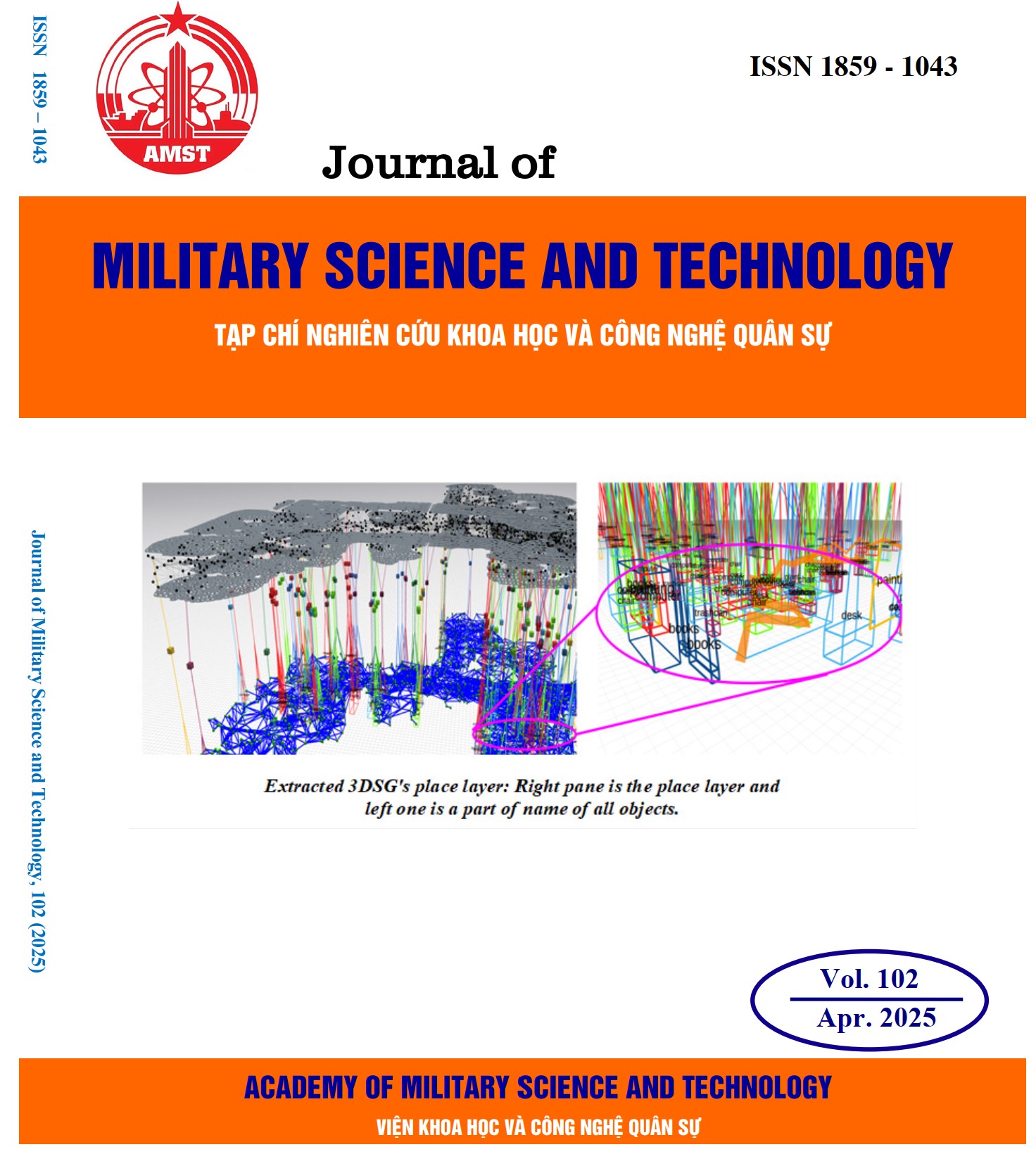Nghiên cứu chế tạo vật liệu in 3D composite trên nền blend của polyamide 6 và polyamide 11
578 lượt xemDOI:
https://doi.org/10.54939/1859-1043.j.mst.102.2025.101-108Từ khóa:
In 3D; Vật liệu composite; Polyamide 6; Sợi cacbon.Tóm tắt
Sợi in 3D CF/PA6+PA11 được tạo ra từ sự kết hợp giữa blend của nhựa polyamide 6 (PA6) của BASF, nhựa polyamide 11 (PA11) của Arkema và sợi cacbon của hãng Toray (Nhật Bản). Nghiên cứu này tập trung vào việc đánh giá tỷ lệ blend của pa6, pa11 và tỷ lệ phối trộn của blend với sợi cacbon trong chế tạo sợi in 3D. Các thông số kỹ thuật quan trọng như độ bền kéo, độ bền uốn cùng độ bền va đập đã được đo đạc để đánh giá hiệu suất cơ học trong các điều kiện chế tạo sợi in. Nghiên cứu đã xác định rằng, blend với tỷ lệ thành phần hàm lượng nhựa PA6:PA11 là 70:30 cho hiệu quả tương hợp tốt nhất. Trên cơ sở blend của PA6 và PA11, sợi in 3D CF/PA6-PA11 đạt độ bền cơ tính phù hợp khi hàm lượng thành phần của PA6, PA11 cùng sợi cacbon kích thước ngắn (≤ 0,3 mm), sợi cacbon kích thước dài (0,3 mm - 1 mm) lần lượt là 49%, 21%, 20% và 10%.
Tài liệu tham khảo
[1]. https://markforged.com/resources/blog/replacing-aluminum-parts-with-3d-printed-carbon-fiber
[2]. Dhinakaran, V., et al., "A review on recent advancements in fused deposition modeling", Materials today: proceedings, 27, p. 752-756, (2020). DOI: https://doi.org/10.1016/j.matpr.2019.12.036
[3]. Singh, R. and H.K. Garg, "Fused deposition modeling–a state of art review and future applications", Reference Module in Materials Science and Materials Engineering, p. 1-20, (2016). DOI: https://doi.org/10.1016/B978-0-12-803581-8.04037-6
[4]. Winarso, R., et al., "Application of fused deposition modeling (FDM) on bone scaffold manufacturing process: A review", Heliyon, (2022). DOI: https://doi.org/10.1016/j.heliyon.2022.e11701
[5]. Melocchi, A., et al., "A graphical review on the escalation of fused deposition modeling (FDM) 3D printing in the pharmaceutical field", Journal of Pharmaceutical Sciences, 109, 10, p. 2943-2957, (2020). DOI: https://doi.org/10.1016/j.xphs.2020.07.011
[6]. Pu'ad, N.M., et al., "Review on the fabrication of fused deposition modelling (FDM) composite filament for biomedical applications", Materials Today: Proceedings, 29, p. 228-232, (2020). DOI: https://doi.org/10.1016/j.matpr.2020.05.535
[7]. Tuazon, Brian & Custodio, Nick Anthony & Basuel, Rex & Reyes, Lanz & Dizon, John Ryan. “3D Printing Technology and Materials for Automotive Application: A Mini-Review”. Key Engineering Materials. 913. 3. (2022). 10.4028/p-26o076. DOI: https://doi.org/10.4028/p-26o076
[8]. Yang, J.; Li, B.; Liu, J.; Tu, Z.; Wu, X. “Application of Additive Manufacturing in the Automobile Industry: A Mini Review”. Processes, 12, 1101, (2024). DOI: https://doi.org/10.3390/pr12061101
[9]. Karkun, Mohammad Suhel & Dharmalingam, Sathish. “3D Printing Technology in Aerospace Industry – A Review”. International Journal of Aviation, Aeronautics, and Aerospace (2022). 10.15394/ijaaa.2022.1708. DOI: https://doi.org/10.15394/ijaaa.2022.1708
[10]. Martinez, Dan William & Espino, Michaela & Honelly Mae, Cascolan & Crisostomo, Jan Lloyd & Dizon, John Ryan. “A Comprehensive Review on the Application of 3D Printing in the Aerospace Industry”. Key Engineering Materials. 913. 27-34. (2022). 10.4028/p-94a9zb. DOI: https://doi.org/10.4028/p-94a9zb
[11]. Adeleke, Adeniyi & Montero, Danny & Lottu, Oluwaseun & Ninduwezuor-Ehiobu, Nwakamma & Ani, Emmanuel. “3D printing in aerospace and defense: A review of technological breakthroughs and applications”. World Journal of Advanced Research and Reviews. 21. 1149-1160, (2024). DOI: https://doi.org/10.30574/wjarr.2024.21.2.0558
[12]. Marciniak, Marcin. “The 3D Printing in Military Applications: FDM Technology, Materials, and Implications”. Advances in Military Technology. 18. 241-257, (2023). DOI: https://doi.org/10.3849/aimt.01846
[13]. Đinh, Thế Dũng, Nguyễn, Trần Hùng, Lã Đức Dương, “Nghiên cứu tối ưu hóa quá trình kéo sợi và in 3D đối với vật liệu CF/PA6”. Tạp chí Khoa học và Công nghệ quân sự, No 94, P. 55–61, (2024), (in Vietnamese). DOI: https://doi.org/10.54939/1859-1043.j.mst.94.2024.55-61
[14]. Miyabo, Atsushi. “Polyamide 11: New Material and Application Development of Castor Oil Based Engineering Plastics for Fiber Industries”. Sen'i Gakkaishi. 67. P.351-P.356, (2011). DOI: https://doi.org/10.2115/fiber.67.P_351







